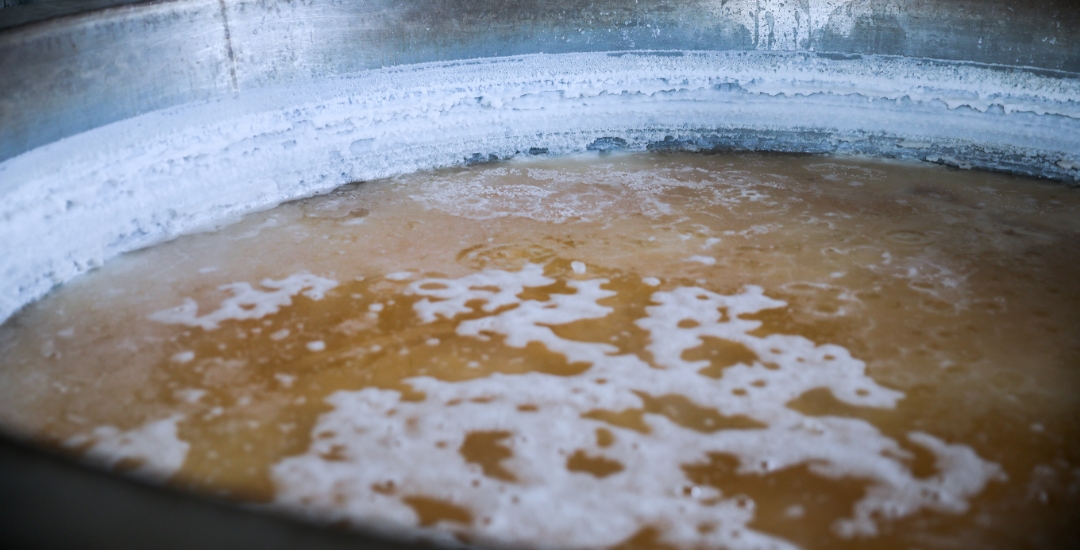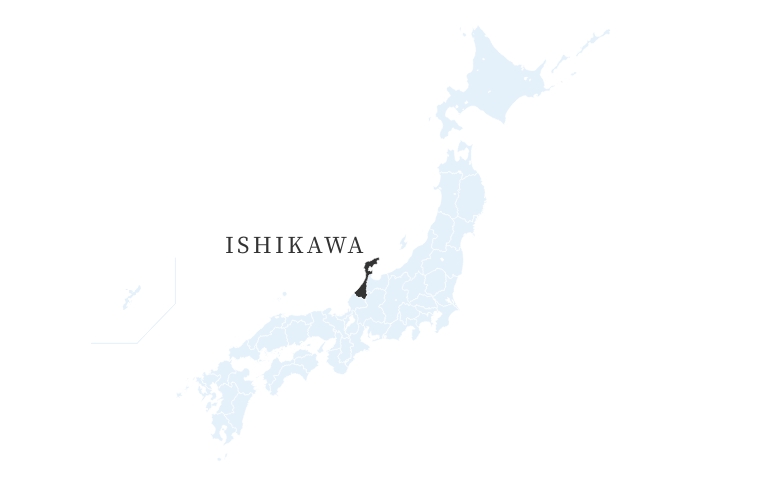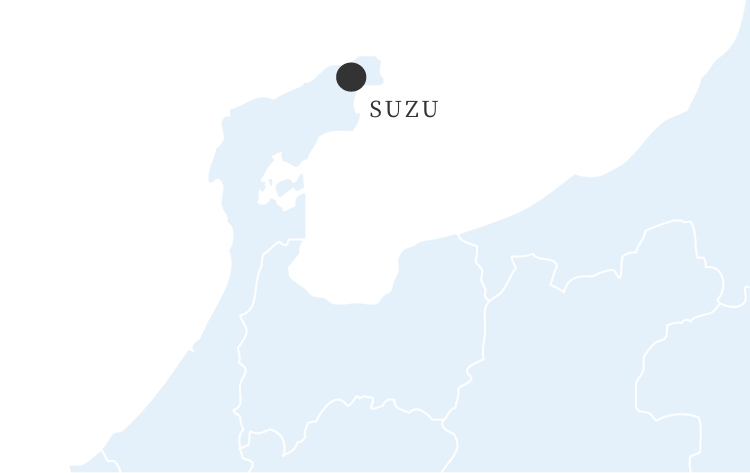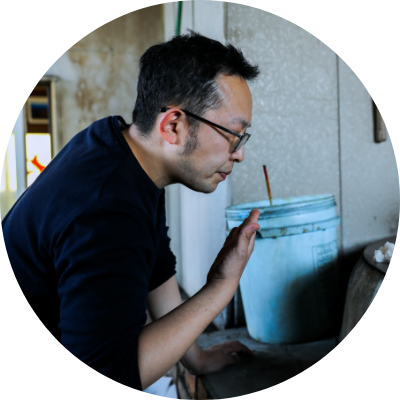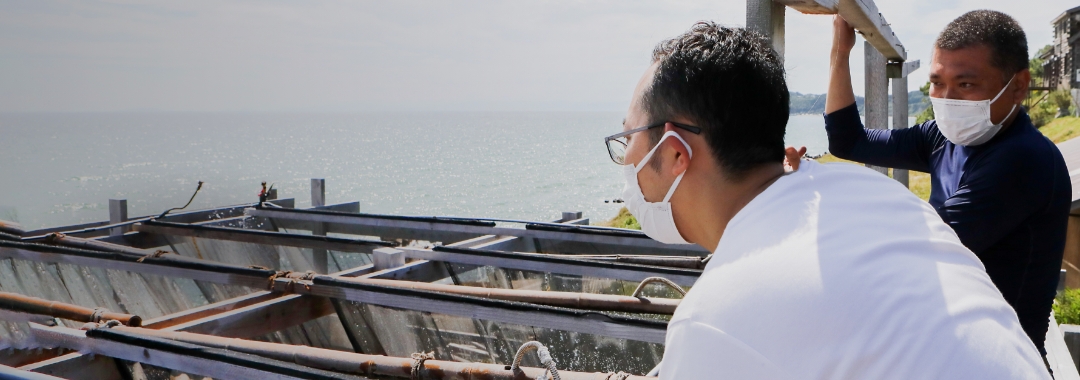What is Agehama-Style Salt Making – an Important Intangible Folk Cultural Property of Noto?
Agehama-style salt making is a method of harvesting salt where water is collected from the sea and sprinkled onto sand beds. Exposed to the sun and the wind the seawater evaporates creating a thick brine, which is then boiled in kettles to obtain salt crystals. This method was developed at a time when civil engineering technology was in its infancy and salt beds could only be built above sea level. Agehama-style salt is now designated an Important Intangible Folk Cultural Property.
The salinity of seawater is usually only 3%. If seawater was boiled as it is to extract salt, it would take an enormous amount of time and fuel, but if the sun and wind are utilized in salt making to reduce the energy-burden of boiling in kettles, the process becomes more efficient. Although rudimentary, this effective method is the result of centuries of wisdom by the ancient Japanese.
「Some 500 years ago, salt making was promoted by the Kaga Domain in this area [Noto Peninsula]. Growing conditions were not favorable for rice along the coast so the Kaga Domain lent farmers rice to be paid back at a later date with the salt they made. This was known as the ‘Rice for Salt System’, or Shiote-mai. Back then salt was more valuable than rice」
Mr. Nakamae entered the salt-making business while still working in construction. He started his ‘wearing-two-hats lifestyle’ with the very simple motivation that “Salt production is fun”. It is surprising how tough he is; for ten years he woke at 3.30am, farming salt in the mornings and then spending the afternoons working at his construction company.
「I am the oldest now, but when I was younger, the older people who worked in the salt fields at that time kindly taught me a lot of things, which really helped me. In the past, this whole area used to be salt fields. In the days when salt was a monopoly, Otani Salt was well known.」
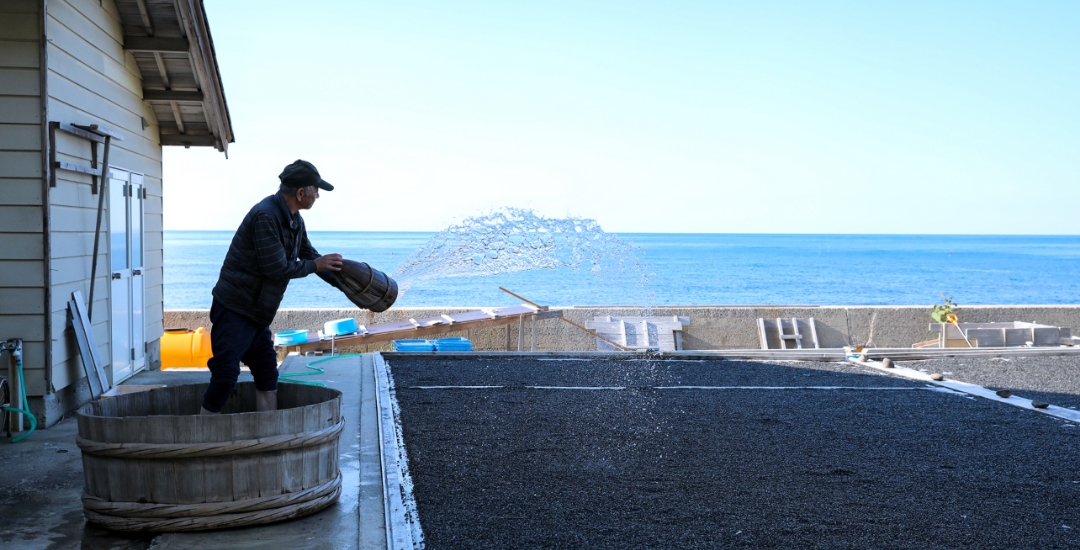
Handing Down Salt Making to the Next Generation by Combining Tradition with Ingenuity
In traditional Agehama-style salt-making, seawater is sprinkled over a bed of sand (a salt pan or field) using a special wooden pail called an ‘Ochoke’. The sand and seawater are then mixed together before leveling out, and exposing to the sun and wind. After several hours of drying, the salt encrusted sand is collected and placed in a wooden frame called a ‘tarefune’. Seawater is then poured over this sand, straining out the highly concentrated brine. Nowadays, the process has become more efficient, a hose is used to spread the seawater instead of a pail, but Mr. Nakamae was still concerned that collecting the brine remained physically demanding work.
「For about 20 years, I’ve been thinking about what I could do about the situation: global warming is making the work more and more demanding, and fewer new people are taking up this profession. This led to the development of the ‘no sand collection’ method. As you can see, our salt fields are gently sloped so that the water drains into a channel for collection. Seawater sprinkled on these salt fields is left to evaporate naturally in the sun, and the water that drains and collects is about 8% salt concentration. If you collect the saltwater in a tank and sprinkle it over the salt fields one more time, the salt crystallized in the gravel will also flow down, resulting in a brine with a salt concentration of around 15%.」
Mr. Nakamae’s ‘Eureka’ moment occurred while watching a popular morning tv drama. It was a scene where the main character’s husband starts making salt after the war. He was inspired by the scene where a hot, sunburnt iron plate is stood at an angle and seawater is poured over its surface to evaporate the water to make a brine, he thought, “That’s it!”. By applying his knowledge from his background in construction Mr. Nakamae developed and built a new salt-field that uses heat retaining black gravel instead of sand.
「We experimented bit by bit, and about three years ago we switched completely to this method. I was worried that it would change the taste of the salt, but it has worked out well. Take a lick of this. It’s about 12% concentration, just before it becomes ‘brine’, and it’s not very salty yet, but it has a good taste, right? Drying in the sun gives it this taste and aroma. If you do it with a machine, it becomes bitter and salty. 」
Mr. Nakamae has chosen to maintain the tradition of drying in the sun and wind, preserving the traditional flavor, while at the same time considering sustainable methods. It’s a choice that is typical of Mr. Nakamae, a man of ideas who says: “I like to try all sorts of things.”
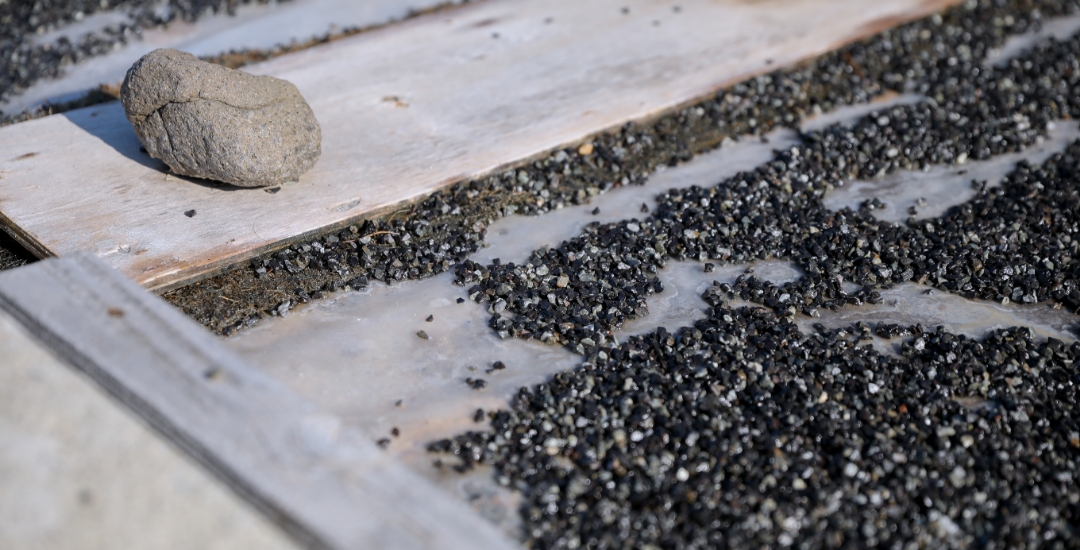
The Ideal Salt – Made Over Firewood
After the ingenious salt-field operation, salt-making moves on to the process of kettle-cooking. If the weather is good, enough brine can be accumulated to cook one pot a day, but this depends on the weather. If it rains, the brine concentration drops dramatically and the salt is ruined. So Mr. Nakamae uses his many years of experience and intuition to predict the weather, while planning the salt-field operations.
The boiling-down process is divided into two stages: ‘Ara-daki’ (coarse-cooking), where the brine is boiled down to 24-25% salt content over 6-7 hours; and ‘hon-daki’ (main-cooking), where the salt is crystallized over a period of about two days. When we visited, a brownish liquid was bubbling in the kettle.
「The heat source is all firewood, so it’s difficult to control the heat. You can use gas instead, but I prefer using wood to get the salt just right. So during the winter, making the firewood is an important part of the job.」
When salt crystals first begin to form in the kettle, their taste is sharp with plenty of ‘nigari’, or bittern, (a nutrient rich liquid left over from salt precipitation); gentle cooking continues to the desired crystal size. If it is overcooked the crystals become too fine, so a skilled and a practiced eye for instantaneous judgment is required. After the salt has had the nigari removed in just the right amount, it is lifted out of the kettle and the Nakamae-style Otani Salt is finally ready.
Mr. Nakamae’s Otani Salt has a deeply wholesome and nourishing flavor with a slightly sweet aftertaste. This sought-after gem is highly respected by top restaurants and patissiers alike. From now on, every time you put a grain of salt on your tongue, the magnificent seas of Noto will come to mind.
